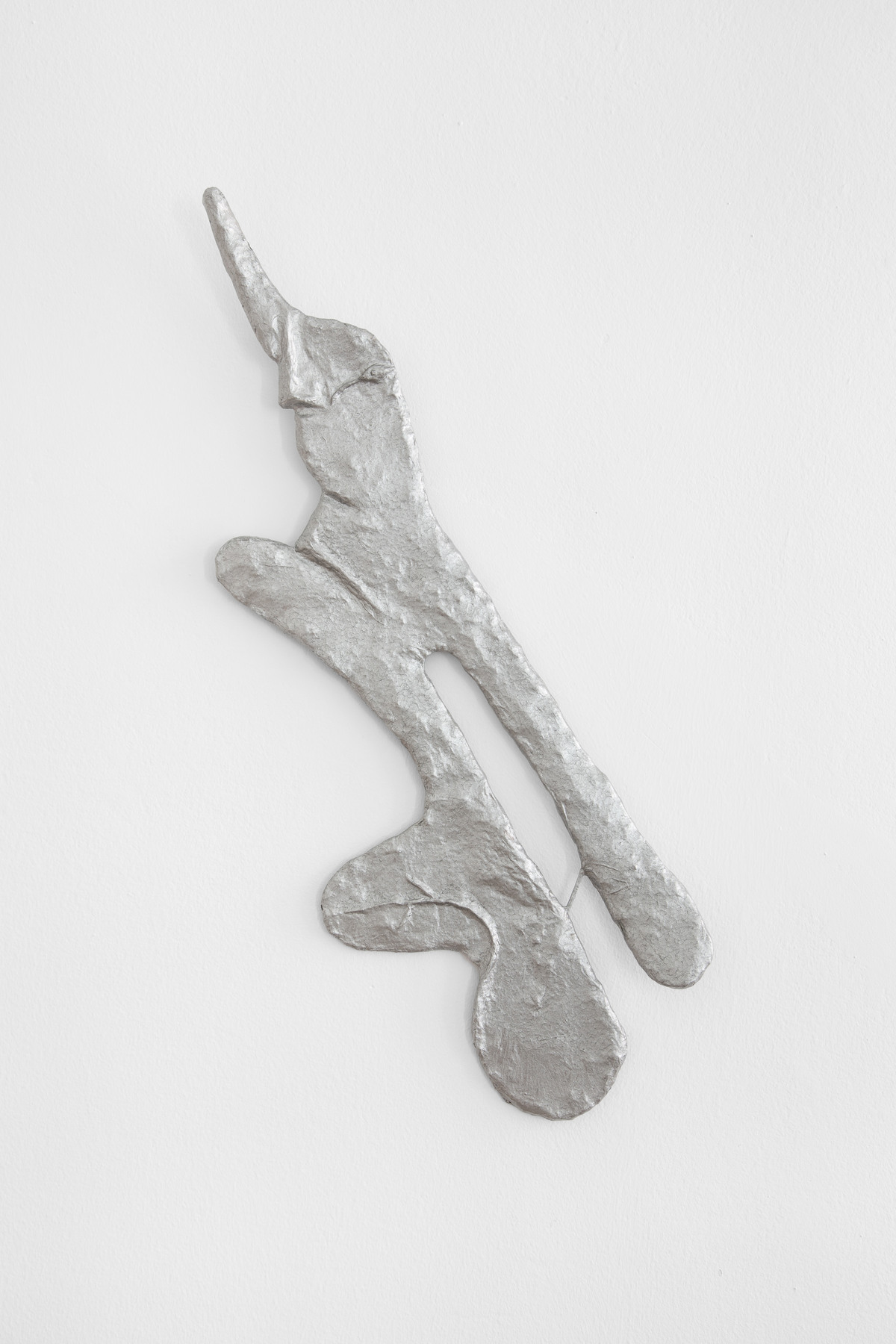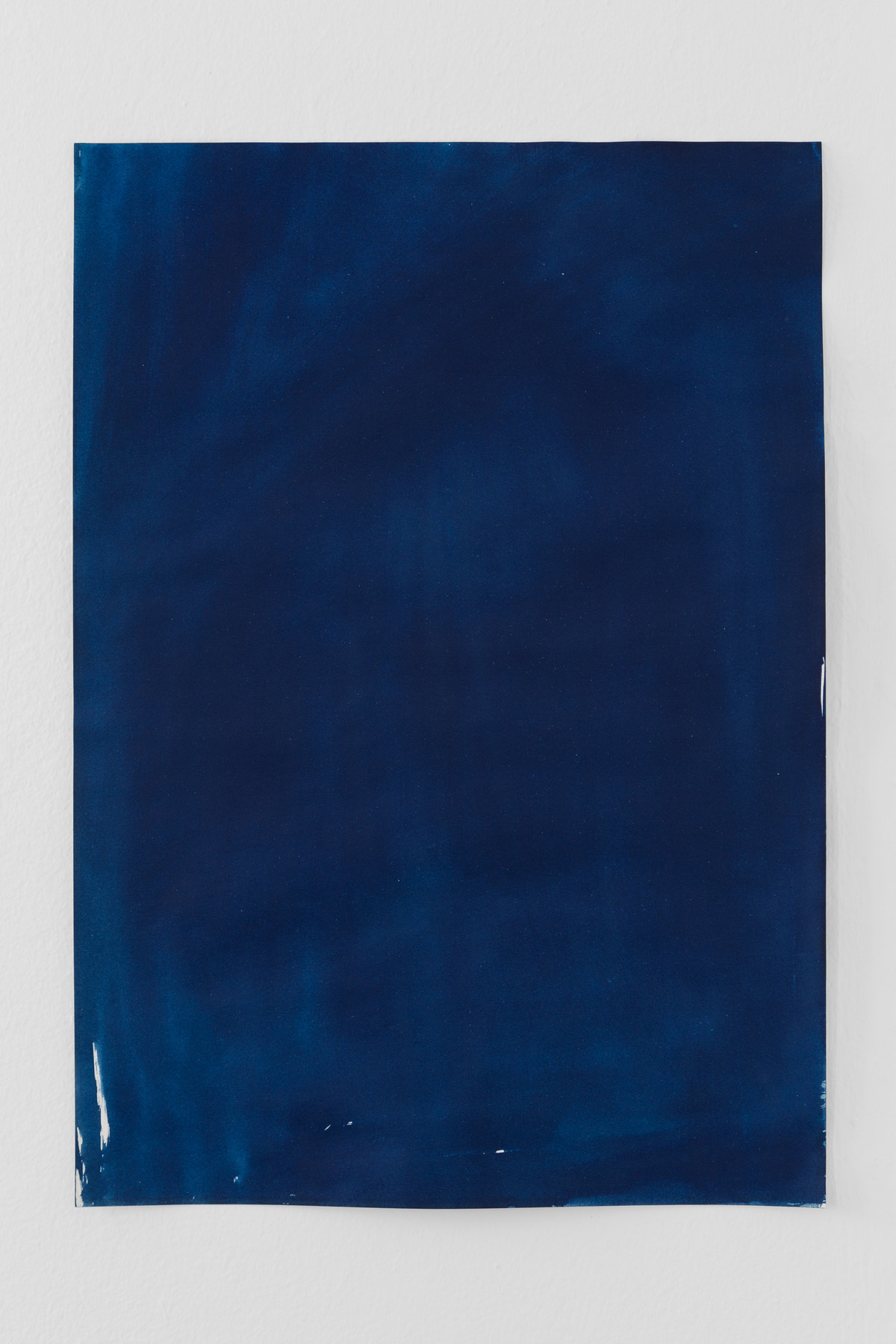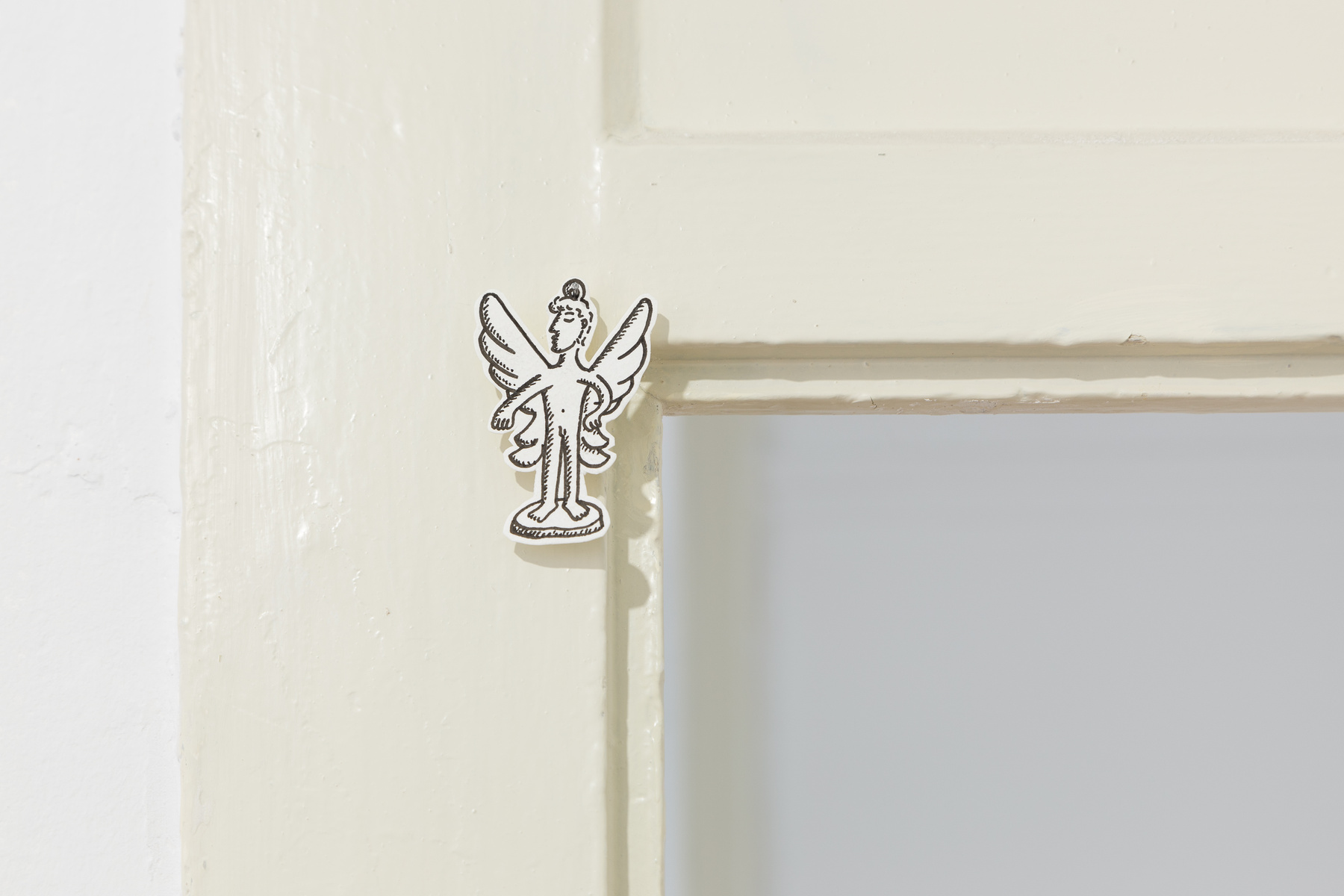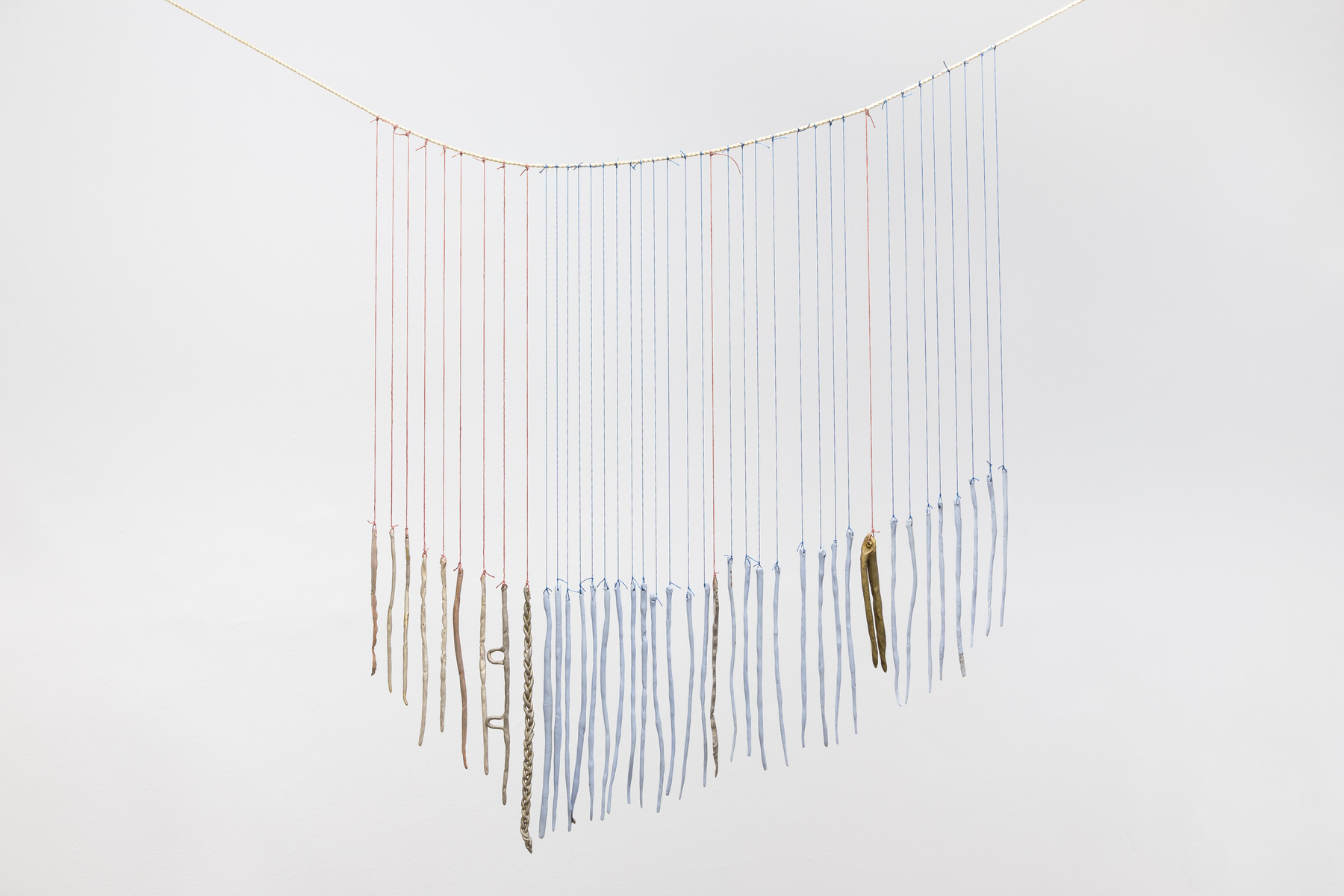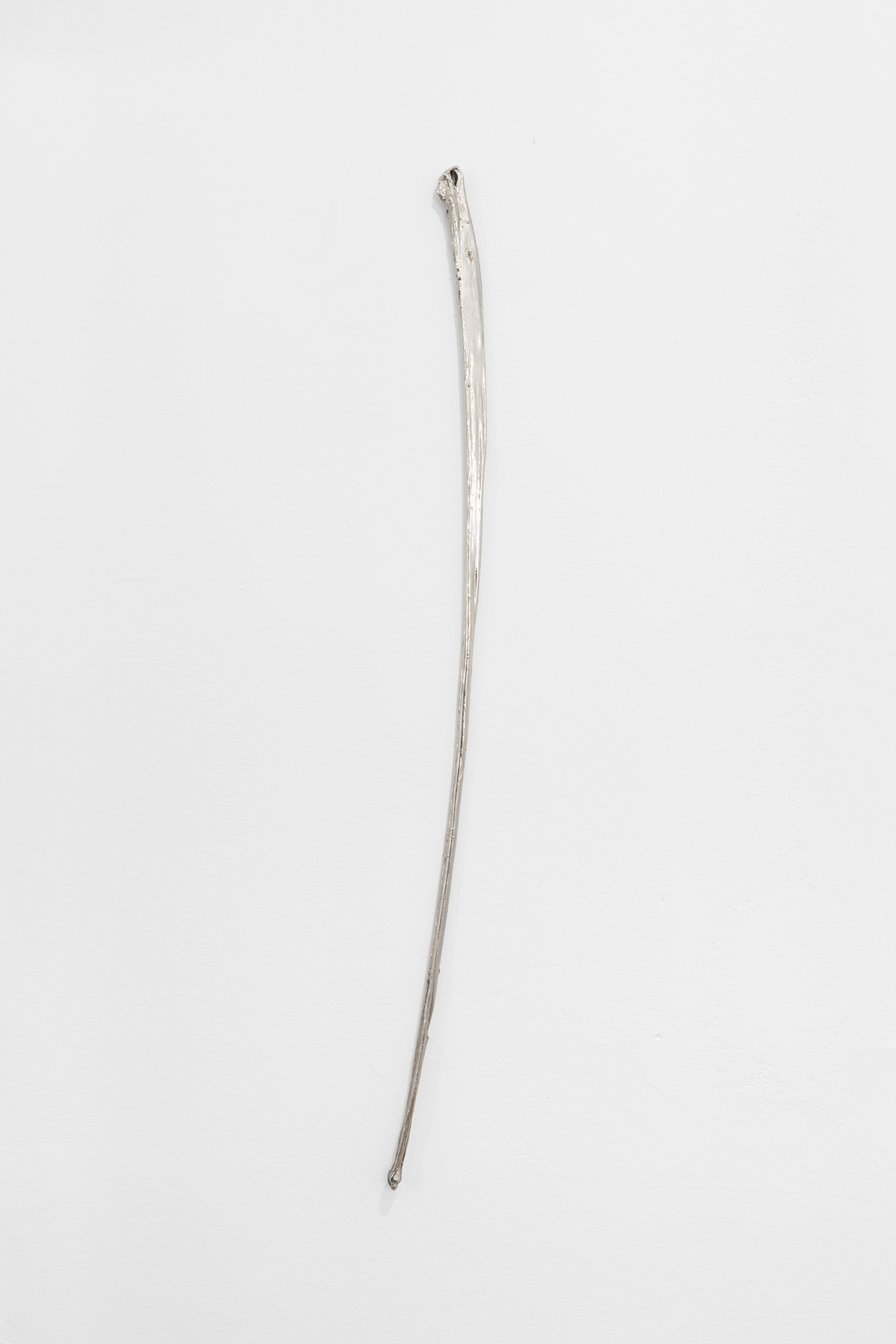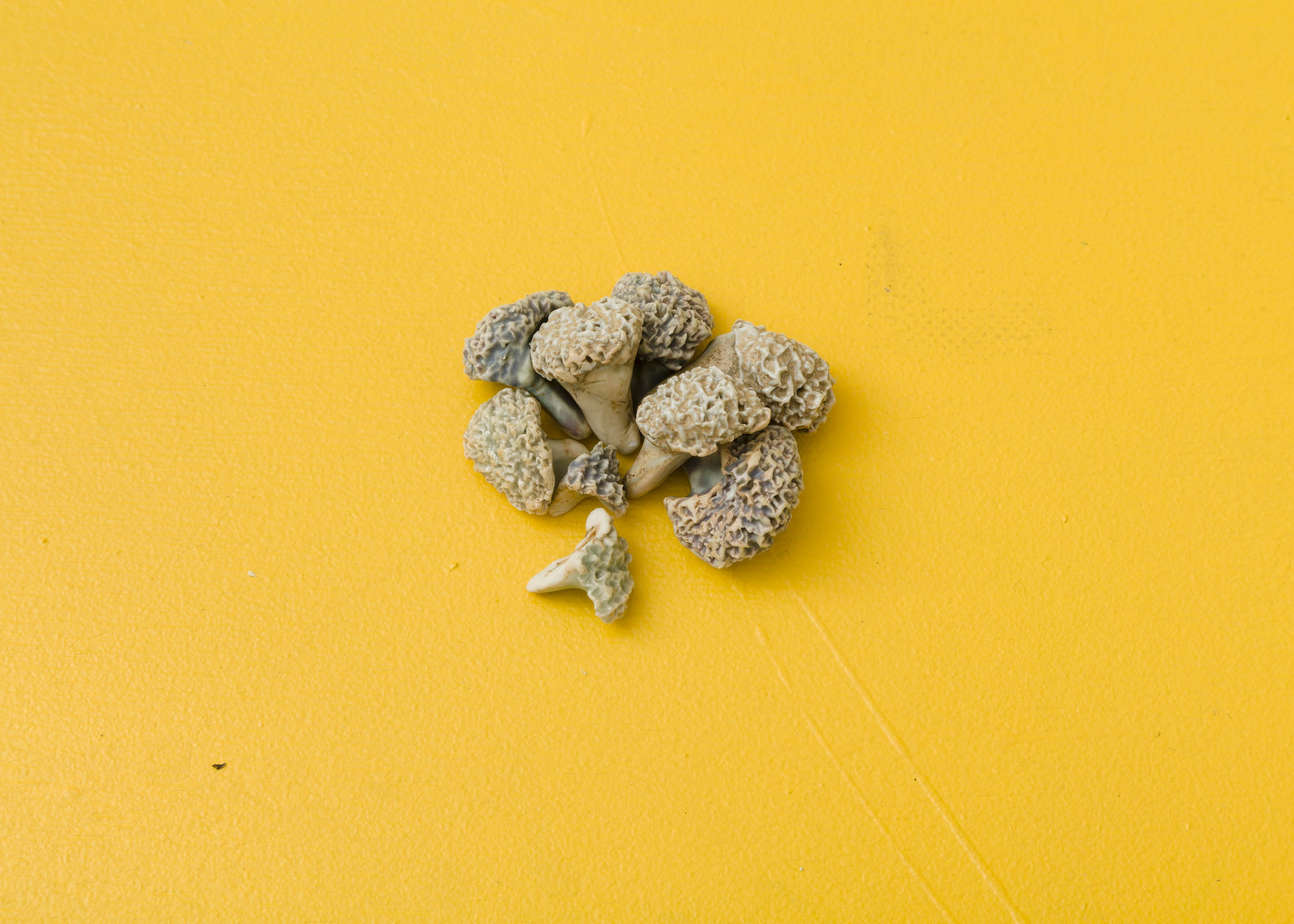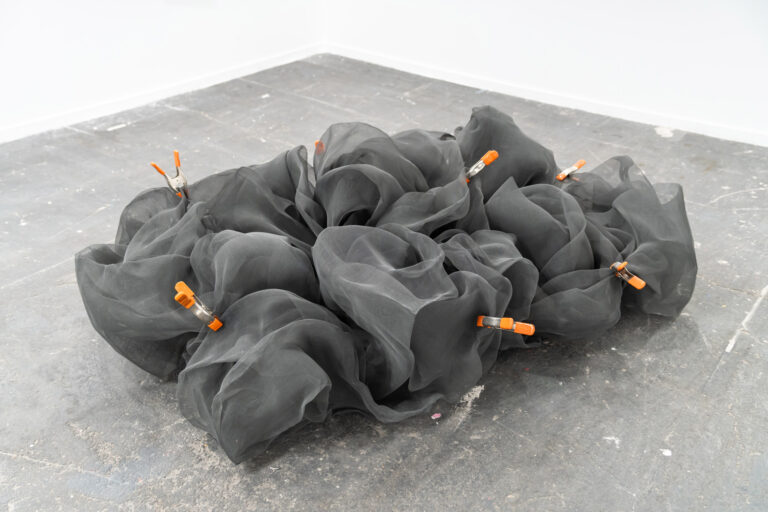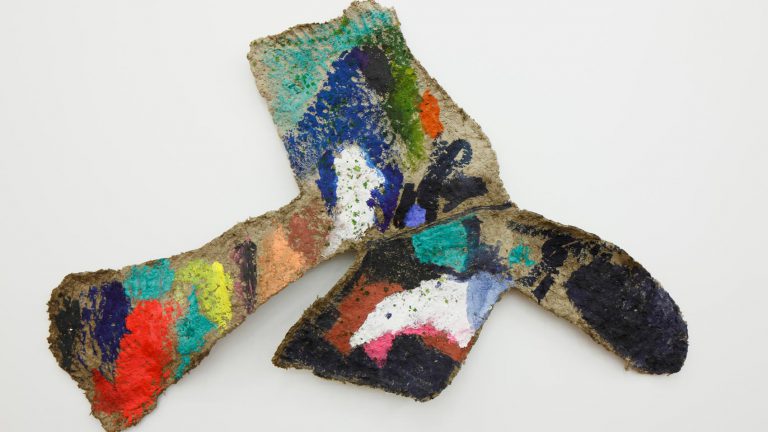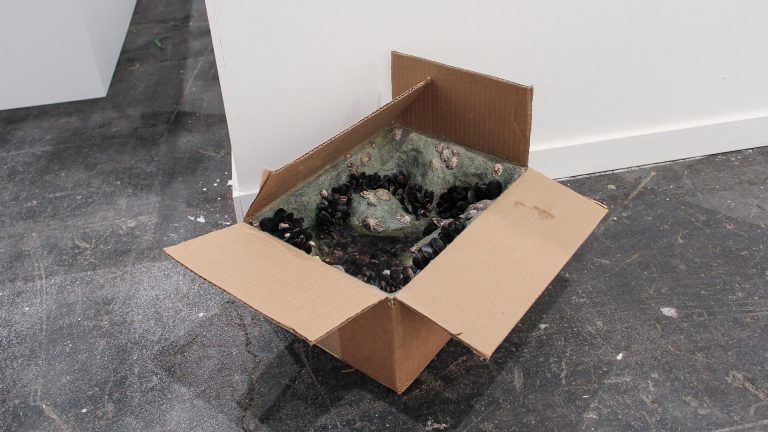Artists: Darren Bader, Dalila Gonçalves, Rodrigo Hernández, Renato Leotta, Luís Lázaro Matos, Kate Newby, Namsal Siedlecki, Belén Uriel
Exhibition title: Jade Bi
Curated by: Sara De Chiara
Venue: MADRAGOA, Lisbon, Portugal
Date: January 28 – March 11, 2017
Photography: all images copyright and courtesy of the artists and MADRAGOA, Lisbon
MADRAGOA is delighted to present Jade Bi, that will inaugurate MADRAGOA ENCIMA, the new space of the gallery.
In 2010 British Museum director Neil McGregor presented A History of the World in 100 Objects, a successful radio series articulated in 100 episodes, each one of them devoted to the description of one of the objects selected from the Museum’s collection, aimed at tracing one of the possibile histories of humanity. Surprisingly, the majority of these objects are everyday artifacts, unpretentious tools or simply fragments that, seen from this perspective, reveal them to be eloquent witnesses of ancient and contemporary civilizations, as well as unexpected turning points in a history that stretches back two million years. Deciphering the layered messages conveyed by the objects means to immerse ourselves in a nebulous matter. A large number of the selected objects bear on them the marks of later events, damages that come with time or interventions deliberately designed to change their meaning, according to their new owner’s wish. For some of them we are not even able to understand precisely their original function and we can only approach them by approximation. Jade Bi is one of the 100 selected objects, now collected in a book. It is a Chinese jade disc, made around 1200 BC, whose original function remains unclear. In the 18th century AC it was owned by the Qianlong Emperor who in 1790 had the disc inscribed with a text he had written, commenting on its antiquity and possible function.
Compared to the study of texts «with objects, we do of course have structures of expertise – archaeological, scientific, anthropological – which allow us to ask critical questions. But we have to add to that a considerable leap of imagination, returning the artifact to its former life, engaging with it as generously, as poetically, as we can in the hope of winning the insights it may deliver» (from the author’s introduction).
A further leap of imagination is in this case asked to the audience: presented on the radio, they do not see the the objects and have to figure them in their minds, combining the information received – materials, shapes, uses, patterns, colours, temperatures – and relying also on personal experiences and memories.
Jade Bi is inspired by the relationship between the objects and the poetry and narratives they can convey, starting from their own physicality. It will be introduced by texts by Gianluigi Ricuperati, a collection of short stories, each one triggered by the photograph of the exhibited objects, with the purpose to continue the leap of imagination that connects the things and the words.
All the pieces presented in the show possess a mysterious quality, a captivating facet that makes the viewer wonder about their creation process, activating an exercise of interpretation that goes beyond the artwork itself. The objects look familiar and unfamiliar at the same time, they could be findings from other eras, near and far, they may have been used, but we no longer know how to use them. In different ways, the works reflect on the passage of time, on the migration of images and the survival of forms, oscillating between ephemeral and permanence. They preserve ancient fragments or shapes, sometimes betray or fake them.
Darren Bader’s works from the series To Have and to Hold question our way of looking at objects, how we perceive them, what we really know about the things we live with, their origins and story, and also the meaning of possessing or collecting them.
Namsal Siedlecki’s starting point is a deep knowlgedge of peculiar objects, investigating their provenance, how they have been produced and how their shapes evolve or remain unaltered through time. In Nerbo, the precariousness of the organic material used – a stretched and dryed bull penis – encounters the persistence of this traditional instrument still produced for the horse race Palio of Siena since its ancient origin. To further preserve this whip over time, its shape as well as its vibrant strenght, it has been coated with nickel.
Dalila Gonçalves’ practice is rooted in the idea of passage of time that leaves its traces on the objects. In her installations and sculptures, everyday objects are decontextualised from their original function and reinterpretated in order to reveal unpredictable aspects of their own matter. The two sculptures Rastos, that appear like tree trunks, are composed by layers of used sandpaper discs gathered from furniture factories. Translado consists of found patterns on paper used for clothing manufacture that look like a tangled city plan.
Related to the act of measuring time and space is Corrispondenze (lo spazio di luce tra Torino e Lisbona), a new work by Renato Leotta. It is a personal interpretation of a correspondence, of a letter which, instead of containing a written message, records the light that separates the sender and the recipient. Treated with cyanotype paint, the paper turns into different shades of blue according to the light it has been exposed to during its travel, measuring the distance with an unconventional, fortuitos system.
Kate Newby’s wind chimes Hummed, whispered, and moaned, suspended in the gallery space, captivates the eye of the viewer that lingers on the thin elements hanging from the same string, discovering that each piece is unique in shape and bear traces and echoes of previous uses, incidental marks and signs of process.
In Rodrigo Hernández’s papier-maché works OOONZE! and The Compass Rose of Will figurative and abstract elements, coming from different references from Mexican art to Italian Futurism, are superposed and integrated to form a new composition, always open to different interpretations.
Belén Uriel’s The fairy place (1) is inspired by Bruno Taut’s Glasbauspiel, a glass block building set designed in 1920: the blocks can be put together to form a wide variety of constructions. Made in blown colored glass, Uriel’s blocks – in the shape of cubes, parallelepipeds prisms, and a sphere – loose their geometrical rigor and their light and softened forms remind those of familiar objects. They compose a transparent structure, one of the possible combinations of the pieces, that can then be collected in the octagonal wooden box which constitutes the plinth of the sculpture.
Luís Lázaro Matos’ contribution to she show is a drawing which is the visual translation of an imaginary object described to him by Gianluigi Ricuperati.
Darren Bader (Bridgeport, USA, 1978), lives and works in New York City. Recent solo exhibitions include: Such are promises, Sadie Coles HQ, London, 2016; Rocks and mirrors, Galleria Franco Noero, Turin, Italy, 2015; The World As Will And Representation, Kölnischer Kunstverein, Köln, Germany, 2015; 39/50, fig-2, ICA, London, 2015; Reading Writing Arithmetic, Radio Athènes, Athens, Greece, 2015; Andrew Kreps Gallery, New York, USA, 2014; Come away with me, Frieze Project at Frieze New York 2014, USA. In 2013 he was awarded The Calder Prize.
Dalila Gonçalves (Castelo de Paiva, Portugal, 1982), lives and works in Oporto. Recent exhibitions include: Quid Pro Quo, Panal 361, Buenos Aires, Argentina, 2017; The clock has no place in the woods, Lamb-Arts, London, 2016; Keep calm and carry on, Tabacalera, Madrid, 2016, Um horizonte de proximidades, Contempary Art Center, Azores, 2015; Notas sobre a construção do tempo. Anozero, Contemporary Art Biennal, Coimbra (2015).
Rodrigo Hernández (Mexico City, Mexico, 1983), lives and works in Mexico City. His recent solo exhibitions include: I am nothing, Heidelberger Kunstverein, Germany, 2016; Every forest madly in love with the moon has a highway crossing it from one side to the other, Kurimanzutto, Mexico City, 2016; El pequeño centro, Museo Universitario del Chopo, Mexico City, 2015; What is the moon?, Bonnefanten Museum, Maastricht, The Netherlands, 2015; Gentle Scorpio!, Parallel Oaxaca, Oaxaca, Mexico, 2014; Dutch Flat Things, Jan Van Eyck Academie, Maastricht, The Netherlands, 2014.
Renato Leotta (Turin, Italy, 1982), lives and works in Turin. Recent solo exhibitions include: Aventura, Madragoa, Lisbon, 2016; Piccola Patria, Galleria Fonti, Naples, 2015; MUSEO (Cavalli e Cavalle, Cavalli, Cavalli), Cripta 747, Turin, 2015; Museo Archeologico Nazionale, Wilson Project and Museo Nazionale E. Sanna, Sassari, 2013; Centramento, Torre Piacentini, Genova, 2013.
Luís Lázaro Matos (Évora, Portugal, 1987), lives and works in Lisbon. Recent solo exhibitions include: Super Gibraltar, Kunsthalle Lissabon, Lisbon, 2015; Models for Solitude, Old School, Lisbon, 2014; Houses On Punta Massulo, Neoteorismoi Toumazou, Nicosia, Cyprus, 2013; One, Two, Three! Position!, Hinterconti, Hamburg, 2013.
Kate Newby (Auckland, New Zealand, 1979), lives between Auckland and Brooklyn. Recent solo exhibitions include: The January February March, with Jennifer Kabat, The Poor Farm, Wisconsin, USA, 2016; Two aspirins a vitamin C tablet and some baking soda, Laurel Doody, Los Angeles, 2015; Always Humming, Gertrude Contemporary, Melbourne, 2015; Big Tree. Bird’s Eye, Michael Lett, Auckland, New Zeland, 2016. In 2012 she was awarded the Walter’s Prize.
Namsal Siedlecki (US 1986), lives and works in Seggiano, Italy. He was recently awarded the Cy Twombly Italian Fellow in Visual Arts and the Premio Moroso. His work has been shown at institutions such as the American Academy in Rome; Fondazione Sandretto Re Rebaudengo, Turin; Villa Romana, Florence; Villa Manin, Udine; Museo Apparente, Napoli; Cripta 747, Turin; Frankfurt am Main, Berlin.
Belén Uriel(Madrid, Spain, 1974), lives and works between London and Lisbon. Recent solo exhibitions include: Segunda-feira, Culturgest Lisbon, 2016; Sand, Paper, Scissors, Projektraum, Museum, Wiesbaden, 2016; Lama no sapato, Parkour, Lisbon, 2014; Pedra, papel e tesoura, Pavilhão Branco Museu da Cidade, Lisbon, 2013; Useful household objects under 10$, Montehermoso Cultural Centre, Vitoria, 2012.
Rodrigo Hernández, OOONZE!, 2016, papier-mâché, wood, lacquer, India ink, 57 x 20 cm approx
Rodrigo Hernández, The Compass Rose of Will, 2016, papier-mâché, wood, lacquer, India ink, 57 x 20 cm approx.
Renato Leotta, Lo Spazio di Luce tra Qui e Lisbona, 2017, papaer, cyanotype paint, 42 x 29, 5 cm
Luís Lázaro Matos, Multiplicator, 2017, marker on paper, 11 x 6 cm approx
Kate Newby, Hummed, whispered, and moaned, 2016, Pink silver, yellow silver, white brass, bronze, porcelain, thread., dimensions variable
Namsal Siedlecki, Nerbo 5, 2016, nichel, cartilage, 100 x 3 x 2 approx





